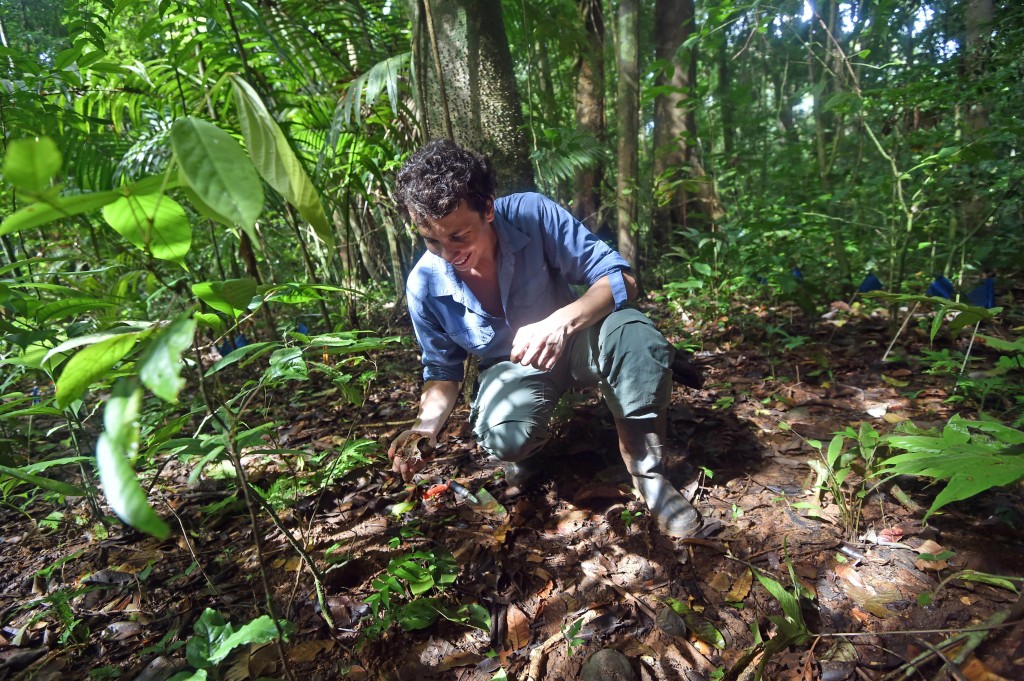 Plant Biology
Plant Biology
The intimate relationships between seeds and fungi
More often than previously thought, fungi are able to infect seeds…what are the consequences? Seeds of tropical trees interact with a wide variety of fungal partners in ways that may help tropical plant diversity to be maintained.

Fungi are almost everywhere. By influencing important processes, such as decomposition and nutrient cycling in forests around the globe, helping plants acquire nutrients from the soil, or helping them cope with enemies that munch on their leaves, fungi are important players on key aspects of life on Earth. But fungi also act as pathogens and disease agents, causing, for example, big losses in the production of major crops.
In tropical forests, seeds of light-loving species can persist in the forest soil - awaiting the right conditions to germinate - for variable periods of time that span months to decades. In that time, seeds must cope with a wide range of environmental challenges such as high soil moisture and have also to defend themselves against predators and pathogens so they can successfully germinate when light and temperature conditions are ideal for seedlings to thrive. While in the soil, seeds interact with a variety of microorganisms but, to date, we know very little about these relationships in tropical forests and how they impact plant diversity. How can tiny seeds remain alive in the soil of tropical forests for such a long time? How often do they get infected with fungi? How do they deal with fungal infection? Does fungal infection affect different plant species in the same way?
We studied nine species of tropical trees to explore seed-fungal relationships and the effects of fungi on the germination and viability of these seeds. To do so, we set up a burial experiment at five different sites on Barro Colorado Island in Panama, where seeds of the studied species were buried in mesh bags for variable periods of time. After burial, we recovered the seeds, sterilized their surfaces, isolated their fungal partners, and determined if they were dead or alive. We found that plant species plays a big role in structuring the communities of seed-associated fungi: each plant species associates preferentially with a particular set of fungal species, no matter where in the soil its seeds are found, how much time they spend in the soil, or even if the seeds are alive or dead.
Next, we experimentally inoculated seeds of some of these species with four fungal strains previously isolated from the field experiment to explore the effects of the fungi on seed germination and viability. We found that although all seed species were successfully inoculated with all fungi, a given plant species responded differently to the infection with different strains. More interestingly, we found that a given fungal strain had different effects on different plant species. For example, fungi that reduced germination in some plant species had no effect or even a positive effect on others.
Our study brings seed-fungal relationships to light in the context of tropical ecology, where most of the work has traditionally focused on seedlings and adult trees. The implications of our findings are important for understanding how the high plant diversity we see in tropical forests today is maintained. By selectively affecting the germination and survival of seeds of different plant species, fungi could be impacting plant populations in a way that promotes the coexistence of several plant species in a single patch of forest. Moreover, our study highlights the powerful effects of fungi upon population dynamics and plant species composition in the Earth's most diverse forests.
Original Article:
C. Sarmiento et al., Soilborne fungi have host affinity and host-specific effects on seed germination and survival in a lowland tropical forest. Proc Natl Acad Sci U S A 114, 11458-11463 (2017)Next read: Designer corals shine a bright light on the future of coral reefs by Madeleine JH van Oppen , Patrick Buerger
Edited by:
Massimo Caine , Founder and Director
We thought you might like
Symbiogenesis: how algae and bacteria shaped new genes together
May 3, 2017 in Evolution & Behaviour | 3.5 min read by Raphaël Méheust , Eric BaptesteAlgae Living in Salamanders, Friend or foe?
May 22, 2018 in Evolution & Behaviour | 4 min read by John Burns , Ryan R. KerneyHow did ant-plant interactions evolve?
May 3, 2019 in Evolution & Behaviour | 4 min read by Matthew P. Nelsen , Richard H. Ree , Corrie S. MoreauThe Trojan mosquito: an in-house parasite defends against malaria
Jan 26, 2021 in Health & Physiology | 3 min read by Enock Mukibetti Mararo , Lilian Mbaisi , Edward Makhulu EdmondMore from Plant Biology
Unravelling the Secrets of Pine Roots: A Tale of Nutrition and Adaptation
Oct 20, 2023 in Plant Biology | 3.5 min read by Rafael Cañas , Francisco OrtigosaStressful memories help plants resist caterpillars
Oct 2, 2023 in Plant Biology | 3.5 min read by Samuel Wilkinson , Adam Hannan Parker , Jurriaan TonDecoding the genome of a jackfruit that grows all year round
Sep 6, 2023 in Plant Biology | 3.5 min read by Tofazzal IslamLife after logging: the tale of recovering tropical forests
Aug 21, 2023 in Plant Biology | 3.5 min read by Maria Mills , Terhi RiuttaEditor's picks
Trending now
Popular topics


